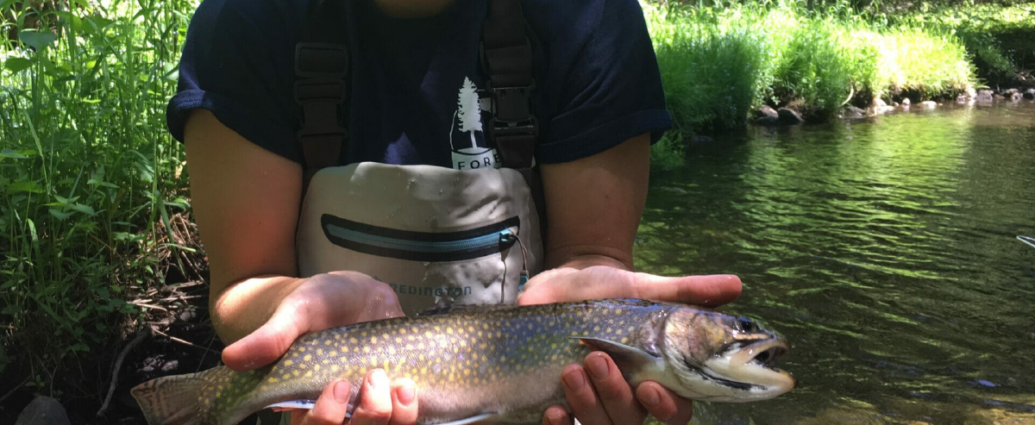Based on presentations from the virtual online Restoring the Driftless sponsored by TU Driftless Area Restoration Effort (TUDARE)
The overt signs of climate change inundate us daily with extreme weather events such as the tornadoes that killed more than ninety people in five states in December 10-11, 2021 and the 13% per decade decline of Arctic sea ice (see https://climate.nasa.gov/vital-signs/arctic-sea-ice/).
Wildfires will have increased globally by 14% by 2030 and are projected to increase by 30% by 2050 according to environmental studies. Many federal dams in the Driftless failed in 2018 causing flooding downstream. The Intergovernmental Panel on Climate Change Report (https://www.ipcc.ch/ ) noted that the Driftless Region is likely to experience an increase in mean and extreme precipitation and in river flooding. We are seeing more and more scientific evidence of climate change. But, what about the Driftless region – what is the impact here and how might we help reduce the effects?
On a macro level we see evidence of changes in our temperatures and precipitation that will make La Crosse, Wisconsin’s climate most similar to southern Iowa in just sixty years (2080) based on the forecast trends developed by the Wisconsin Initiative on Climate Change Impacts (https://wicci.wisc.edu/wisconsin-climate-trends-and-projections/)
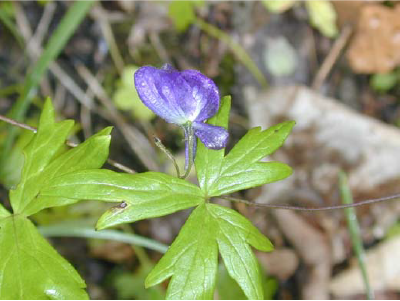
Humans adapt fairly well to minor changes in climate but how will the fragile Driftless ecosystem fair? The Driftless has long served as a unique environment which supports many endangered species including timber rattlesnakes, the Iowa Pleistocene snail, and the Northern Monkshood flower.
Slight changes in temperature and rainfall could have substantial impact on Driftless region plants and animals. I was fortunate to attend (virtually) the recent Trout Unlimited Restoring the Driftless online seminar featuring expert researchers and scientists including a DNR fisheries expert, doctoral fellow, river systems biologist, DNR stream ecologist, freshwater scientist, hatchery biologist, and hydrologic scientist/engineer. It surprised me that over 500 people registered for this seminar but that is a reflection of the strong interest in understanding how to protect the Driftless region.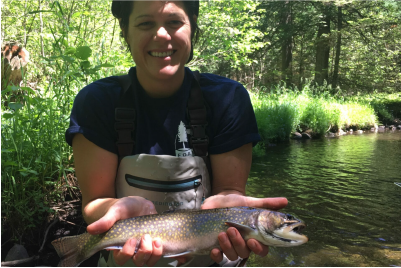 Data collection is a critical part of the scientific process, and the Trout Unlimited online seminar provided an opportunity to listen in on scientists and researchers sharing their research and restoration projects, findings, and projections. They had a lot to share! The average citizen does not often have the opportunity to be a mouse in the corner listening to these brilliant minds share their data, ask probing questions, and deep dive into the Driftless region challenges. Every session made reference to climate change and the concern for negative impact on our precious ecosystem.
Data collection is a critical part of the scientific process, and the Trout Unlimited online seminar provided an opportunity to listen in on scientists and researchers sharing their research and restoration projects, findings, and projections. They had a lot to share! The average citizen does not often have the opportunity to be a mouse in the corner listening to these brilliant minds share their data, ask probing questions, and deep dive into the Driftless region challenges. Every session made reference to climate change and the concern for negative impact on our precious ecosystem.
The Driftless Region is uniquely suited as a world-class trout fishery! Each year thousands of anglers visit on average of 2.5 days with hopes of catching cold-water trout (especially native brook and non-native brown trout). Sadly, it is predicted that within the next 50 years brook trout will all but disappear and brown trout will be significantly decreased. https://www.umass.edu/necsc/projects/stream-temperatures-driftless-area
Driftless Impact: Water and Increasing Temperatures
Why is this happening? According to Bryan Maitland, Wisconsin Water Resources Science Policy Postdoctoral Fellow at UW-Madison, we may lose 68% of trout habitat by 2050 due to shifts in regional precipitation. At this time, the Driftless region has increased precipitation by 15% and had a 43% increase in big rainfalls.
UW-Madison researchers noted that the average annual air surface temperature is predicted to increase 6 degrees F and an average 5.6-degree F in annual average high and low temperatures by 2055. Extreme changes result in negative impact on the Driftless ecosystem. (https://wicci.wisc.edu/wp-content/uploads/2019/12/2011-wicci-report.pdf)
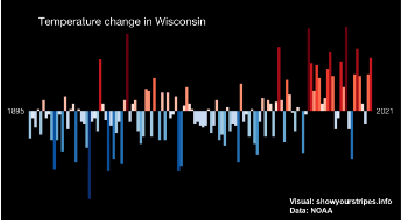 Maitland’s study hypothesized the possible impacts of climate change on brook and brown trout spawns due to increased stream temperatures and seasonal rainfall. His findings indicate a measurable negative effect on spawns, especially on brook trout, as seen through reduction in juvenile populations (aka recruitment – the rate juveniles are added).
Maitland’s study hypothesized the possible impacts of climate change on brook and brown trout spawns due to increased stream temperatures and seasonal rainfall. His findings indicate a measurable negative effect on spawns, especially on brook trout, as seen through reduction in juvenile populations (aka recruitment – the rate juveniles are added).
Winter and spring heavy rains are taking a toll on the ability to support healthy brook and brown trout populations.
He also recommends stocking and wild transfers to reseed a population after severe weather extremes. Trout fisheries are important to assure trout populations are stable and supporting their efforts are key.
Habitat protection and improvement are ongoing needs to reduce the impact of increased flooding, rising stream temperature, and loss of suitable spawning habitat. Excess rain needs to be stored and not become runoff eroding the soil and flooding the area. Maitland recommends that we take action to protect and enhance riparian ( interface between land and a river or stream which include flood plains and stream banks) habitat and canopy shade, which is a key to buffer rising stream temperatures (shade decreases temperatures).
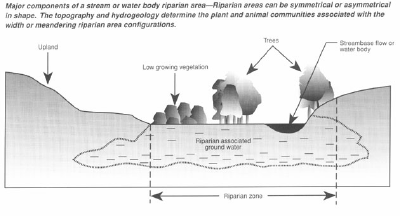 There was lively discussion during the online seminar on the specifics of enhancing riparian habitats. Is it better to plant trees or grasses, which provide more protection, more shade, reduce soil erosion? There is much to consider when planning restoration projects that is for sure!
There was lively discussion during the online seminar on the specifics of enhancing riparian habitats. Is it better to plant trees or grasses, which provide more protection, more shade, reduce soil erosion? There is much to consider when planning restoration projects that is for sure!
If you are new to stream restoration, strategies and habitat practices found helpful are included in Trout Unlimited’s Repairing Riparian Habitat Guide. The Guide makes for a good basis for pondering how we can support local restoration efforts and positively contribute to the effort to counteract climate change. https://www.nrcs.usda.gov/Internet/FSE_DOCUMENTS/nrcs142p2_022549.pdf
Climate & Economic Impact in the Driftless
Climate change has a huge economic and ecosystem impact as our region sees an estimated 6,176 angler hours per mile of stream in 2020-2021. You can imagine the large amount of money spent annually by anglers on housing, food, gear, and licensing. Trout Unlimited conducted an economic impact study in 2016 (see full report https://www.fishhabitat.org/files/uploads/TU_Driftless_Economic_Report.pdf) and found anglers visiting the Driftless Region add $413 million to our economy each year.
The report further states it is estimated that the total spending and economic impact of recreational angling in the Driftless area has increased from $1.1 billion in 2008 to $1.6 billion in 2016. Truly, trout fishing is BIG business and loss of that income will equal big downturns.
The bad news is climate change is here and creating negative impact on the Driftless already. There is a loud and clear message emanating from the recommendations of the experts presenting and it is this: Action is needed. The good news is we can take small actions locally to offset the negative impact, help save our trout populations, and be a meaningful participant in the process.
Consider this: there are at least 18 area Trout Unlimited chapters restoring sections of 150 streams and working on 12-18 miles of streams annually. Spending a day volunteering can make an enormous difference in the Driftless climate change challenge and has unexpected benefits of new friends, health benefits, and community. Invest time through volunteering to help restoration projects in your area.
Join and volunteer to help Trout Unlimited
Contact your Trout Unlimited chapter
https://www.facebook.com/TUDriftless/ TU Driftless Facebook page
https://wicouncil.tu.org/tu-projects/driftless-area-restoration-effortTROUT UNLIMITED WISCONSIN COUNCIL Conserving, protecting and restoring our country’s cold-water fisheries and their watersheds
Additional resources:
See the TU article on the many restoration projects going on in the Driftless Area https://www.tu.org/magazine/conservation/restoration/2020-busy-for-restoration-in-wisconsins-driftless-area/
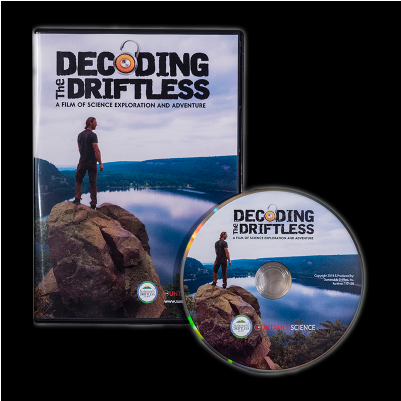 We all can support and protect the Driftless Region ecosystem through educating young people and ourselves about the challenges. Help to educate young people by encouraging educators to take advantage of Sustainable Driftless, Inc.’s free access to their award-winning film, Decoding the Driftless and the environmental education lessons provided. Library media staff can register for a free copy of the film on USB and the lessons (pdf file) at https://forms.gle/15sq4ne8Z8PqcNySA.
We all can support and protect the Driftless Region ecosystem through educating young people and ourselves about the challenges. Help to educate young people by encouraging educators to take advantage of Sustainable Driftless, Inc.’s free access to their award-winning film, Decoding the Driftless and the environmental education lessons provided. Library media staff can register for a free copy of the film on USB and the lessons (pdf file) at https://forms.gle/15sq4ne8Z8PqcNySA.
Read about climate change at authoritative science websites such as https://climate.nasa.gov/ask-nasa-climate/
Help children understand climate change:
Climate Kids https://climatekids.nasa.gov/kids-guide-to-climate-change/
Talking to Children about Climate Change
https://oceanservice.noaa.gov/education/planet-stewards/talking-about.html

